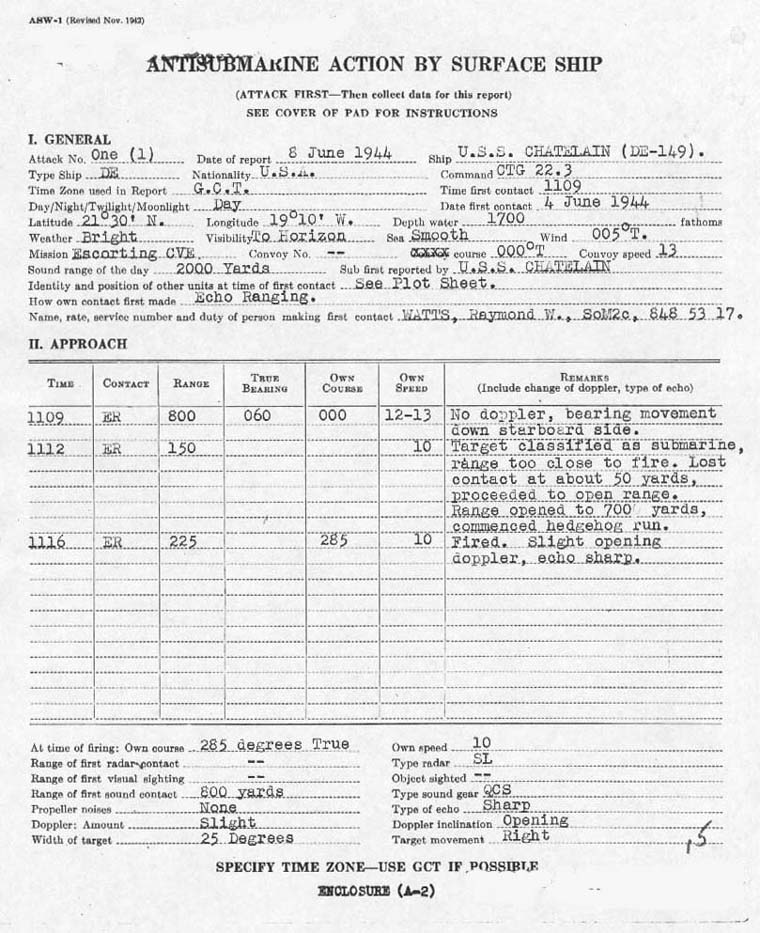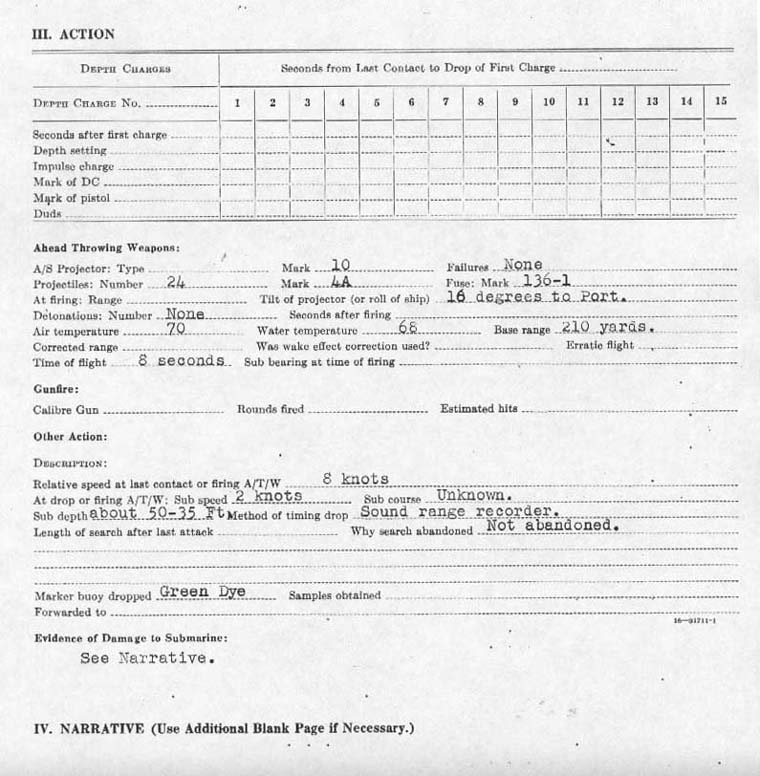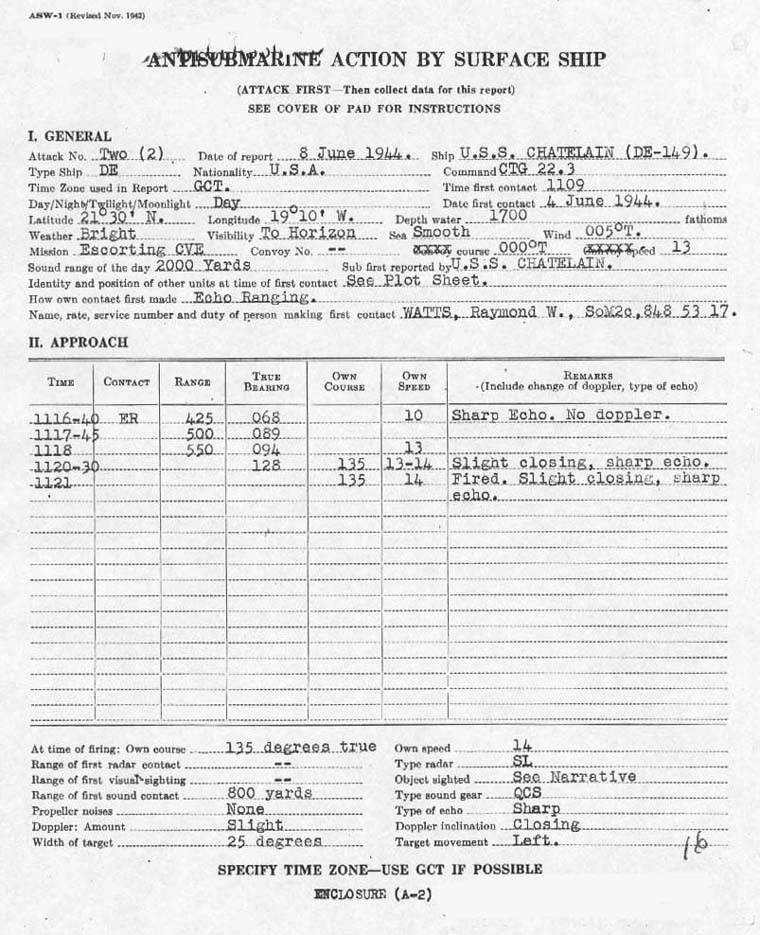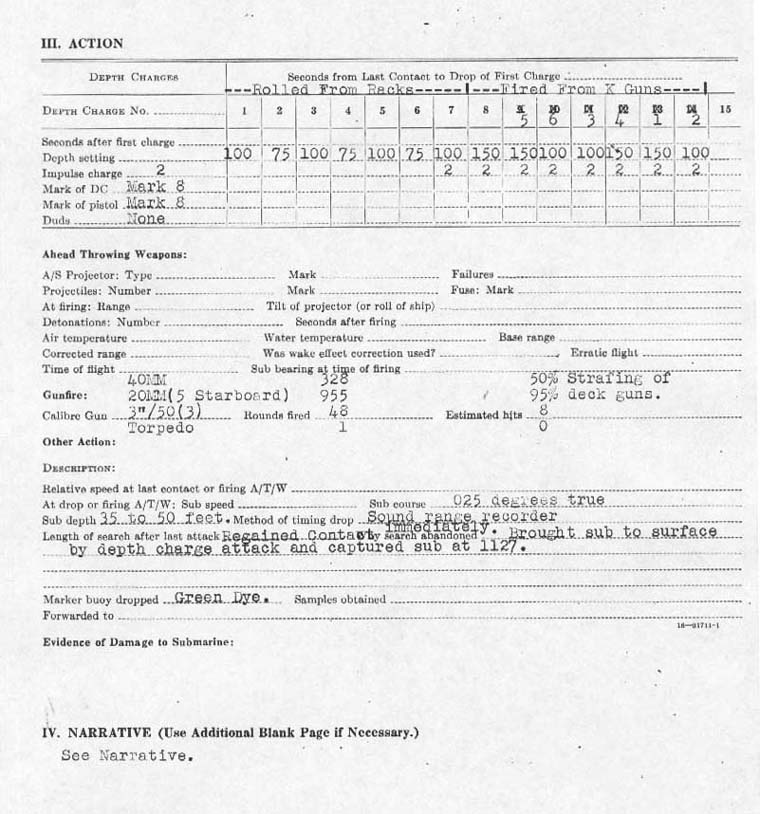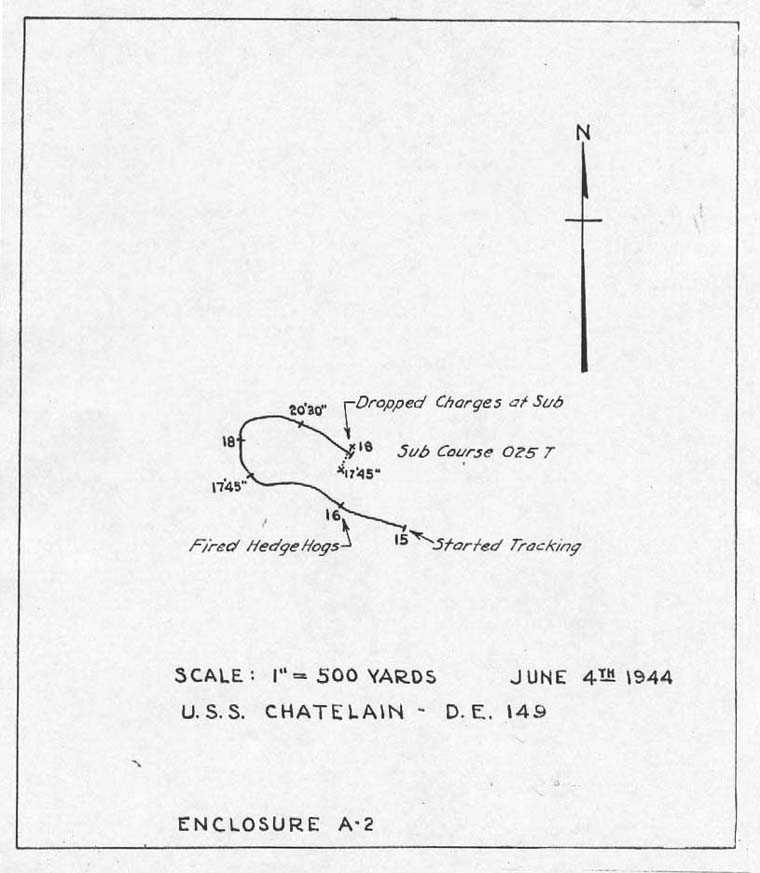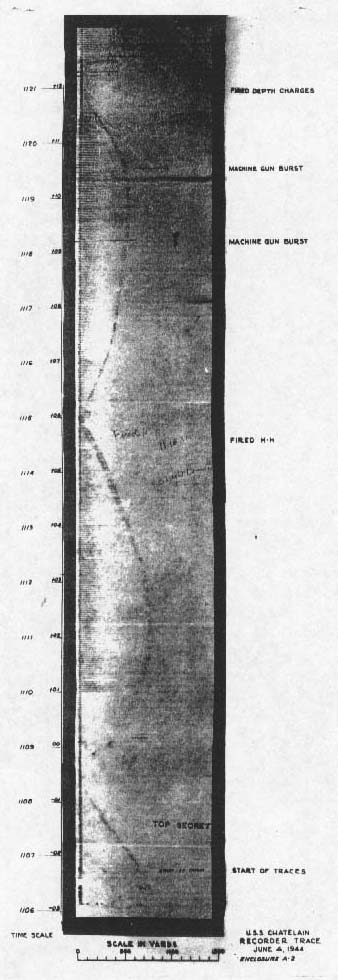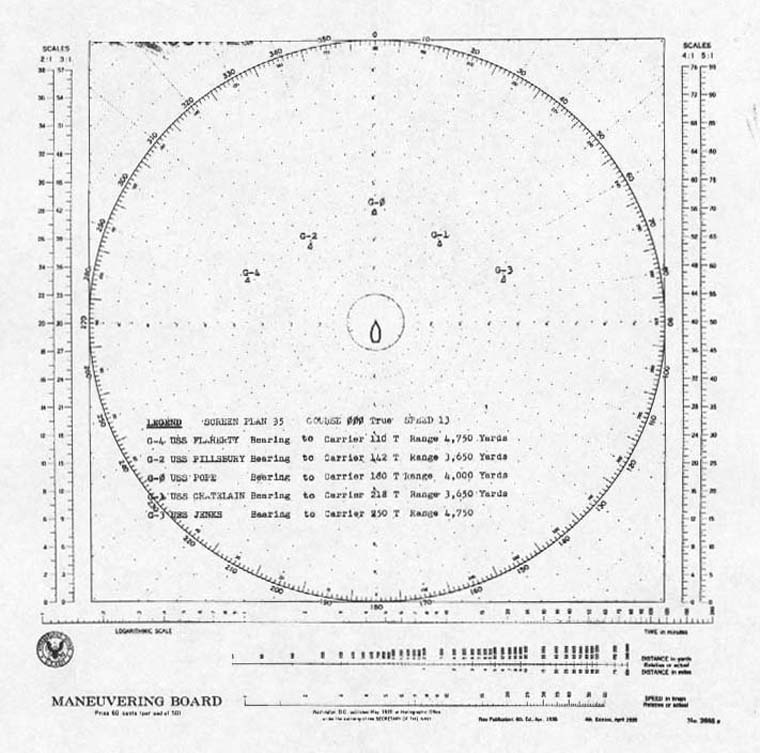U.S.S. CHATELAIN (DE-149) |
||||||||||||||||||||||||||||||||||||||||||||
8 June 1944. |
||||||||||||||||||||||||||||||||||||||||||||
|
||||||||||||||||||||||||||||||||||||||||||||
|
||||||||||||||||||||||||||||||||||||||||||||
| 1. The U.S.S. CHATELAIN, in company with Task Force 22.3 on the forenoon of 4 June 1944, was on base course 000°T, 021° psc. at standard speed 13 knots (220 RPM), making anti-submarine patrol in the Cape Verde Islands Area. SOP Captain D. V. Gallery, U.S.N., in the U.S.S. GUADALCANAL. The CHATELAIN was patrolling station G-1 of Screen plan 35, and zig-zagging in accordance with the GUADALCANAL. | ||||||||||||||||||||||||||||||||||||||||||||
| 2. Carrier had hoisted signal QUEEN, QUEEN, denoting commencing flight operations, when contact was first made at approximately 1109Z; bearing 060°T; range approximately 800 yards; no doppler; bearing width 25°. | ||||||||||||||||||||||||||||||||||||||||||||
| 3. Changed course to 075°, reduced speed to 10 knots. Rapid bearing movement was noted to starboard. At approximately 1109-30, changed course to 095°T. At 1110, the Commanding Officer relieved the deck. Reported via TBS to carrier: "Investigating possible sound contact." First range obtained at 600 yards on range recorder. Range closed rapidly. 1110-30, ASW officer arrived on the bridge. 1112, classified target as submarine. Range too close to fire. Sounded General Quarters. Lost contact at less than 100 yards. | ||||||||||||||||||||||||||||||||||||||||||||
